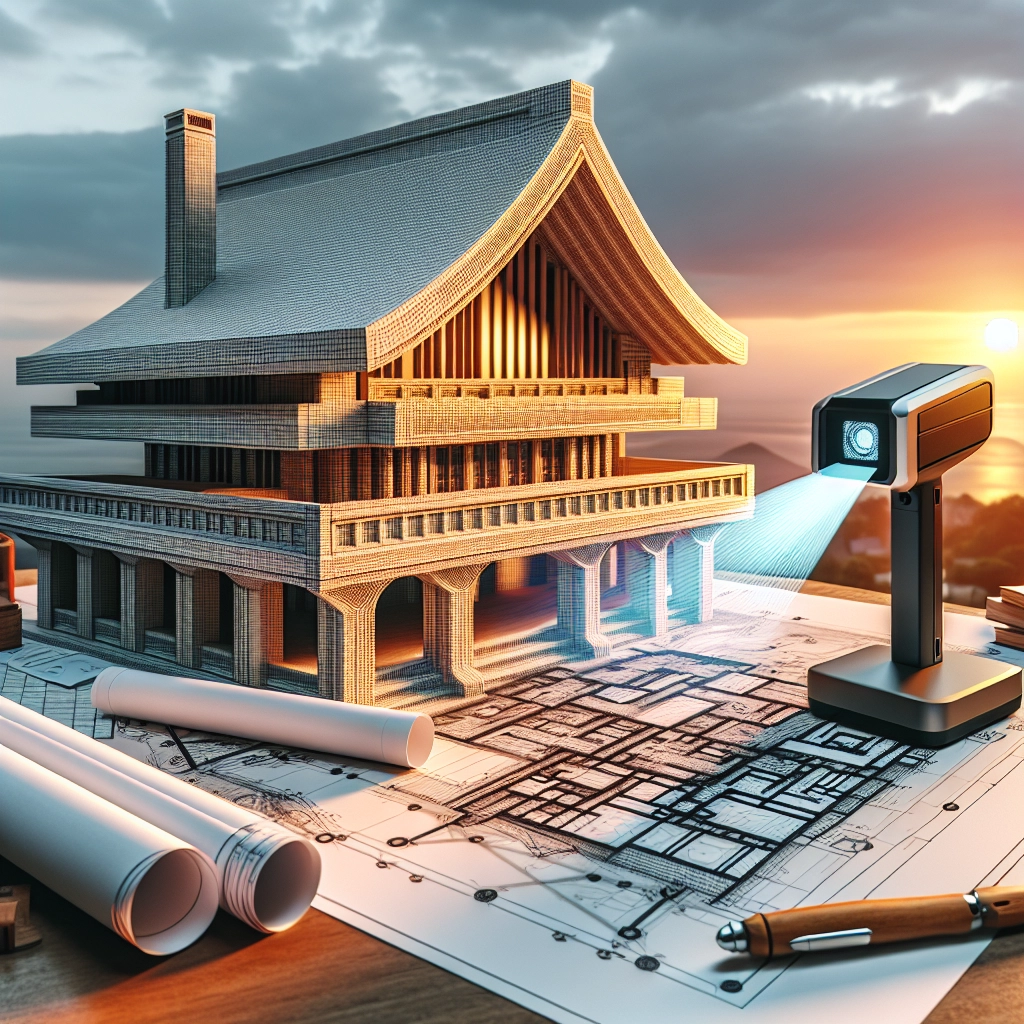
- Published on
- Authors

- Name
- Con Tech News
How 3D Scanning is Enhancing Construction Project Documentation
In an industry where precision is paramount, the construction field has always been an arena ripe for technological disruption. One innovation making waves is 3D scanning technology, which is rapidly transforming how construction projects are documented. Imagine capturing every nook and cranny of a site with pinpoint accuracy, creating a detailed digital replica that can be manipulated, inspected, and shared effortlessly. Welcome to the future of construction project documentation!
The Basics of 3D Scanning
For the uninitiated, 3D scanning involves capturing the shape, dimensions, and spatial relationships of objects and spaces using lasers or structured light. The technology works by emitting light beams, which are reflected back to a sensor, computing the distances to various surfaces and creating a cloud of data points. These points are then stitched together to form a comprehensive 3D model.
Types of 3D Scanners
There are several types of 3D scanners, each suited to different applications:
- LiDAR (Light Detection and Ranging): Uses laser pulses to measure distances, suitable for large-scale outdoor environments.
- Photogrammetry: Uses photographs taken from multiple angles, then uses software to triangulate and generate 3D models.
- Structured Light Scanners: Project a known pattern of light and capture the deformation to compute shapes, ideal for smaller volumes and higher detail resolutions.
The Impacts on Construction Documentation
Precision and Accuracy
The cornerstone of a successful construction project lies in its foundation—literally and figuratively. With 3D scanning, the exact measurements and conditions of a construction site can be captured with millimeter accuracy. This eliminates the margin of error associated with traditional measuring techniques, leading to structures that are literally built on a solid foundation of precise data.
Time Efficiency
Traditional methods of site measurement and documentation can be time-consuming, requiring manual labor and multiple site visits. 3D scanners, on the other hand, can capture extensive data in a fraction of the time. By reducing the need for re-work and avoiding costly mistakes that arise from inaccurate measurements, the construction timeline is considerably shortened.
Improved Communication
A 3D model offers a visually rich method of documentation that is far superior to two-dimensional blueprints or flat photographs. Architects, engineers, and construction crews can all access and review these models, ensuring that everyone is on the same page. This enhanced communication reduces the likelihood of misunderstandings and errors, thus streamlining the project workflow.
Enhanced Safety
Construction sites can be hazardous, and documenting these environments using traditional methods can pose safety risks. 3D scanning can be executed from a safe distance, reducing the need for hazardous manual measuring in precarious locations. This not only keeps workers safe but also ensures that no critical areas are overlooked due to inaccessibility.
Real-World Applications
Renovation Projects
For renovation projects, having an accurate model of the existing structure is invaluable. 3D scanning can capture every detail of the current state, allowing for precise planning and modification without unexpected surprises. This is especially crucial in historic preservation projects where maintaining the integrity of the original structure is essential.
Quality Control
Throughout the various phases of a project, 3D scanning can be employed to compare as-built conditions against design specifications. Any deviations can be quickly identified and rectified, ensuring that the final product meets the intended design criteria.
Asset Management
Once construction is complete, 3D models serve as a permanent and detailed record of the structure. These models can be invaluable for future maintenance, renovations, or expansions, providing a comprehensive reference that eliminates the guesswork inherent in traditional documentation methods.
Future Prospects
The integration of 3D scanning with other technologies like Building Information Modeling (BIM) and augmented reality (AR) promises even more exciting advancements. Imagine overlaying a 3D scanned model onto a real-world environment using AR glasses—instantly visualizing changes and updates in real-time!
Conclusion
3D scanning is not just enhancing construction project documentation; it is revolutionizing it. By providing unparalleled accuracy, efficiency, and safety, this technology is paving the way for smarter, more efficient construction practices. As we embrace these advancements, the sky's the limit—both in terms of the heights we can build and the precision with which we can do it.
Is your construction team ready to elevate your project documentation to the next dimension? The future is here, and it's in 3D.
Thank you for joining us on this exploration of how 3D scanning is changing the face of construction documentation. Feel free to leave your thoughts and experiences in the comments below. Let's build the future together!
Remember to stay tuned for more exciting insights into the world of technology and innovation. Until then, keep pushing the boundaries of what's possible!
